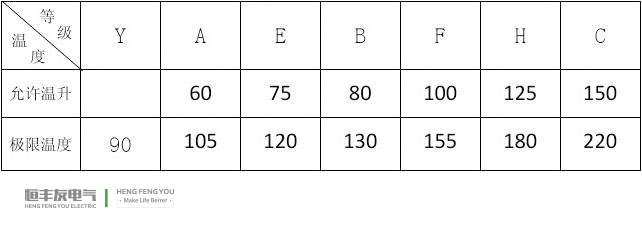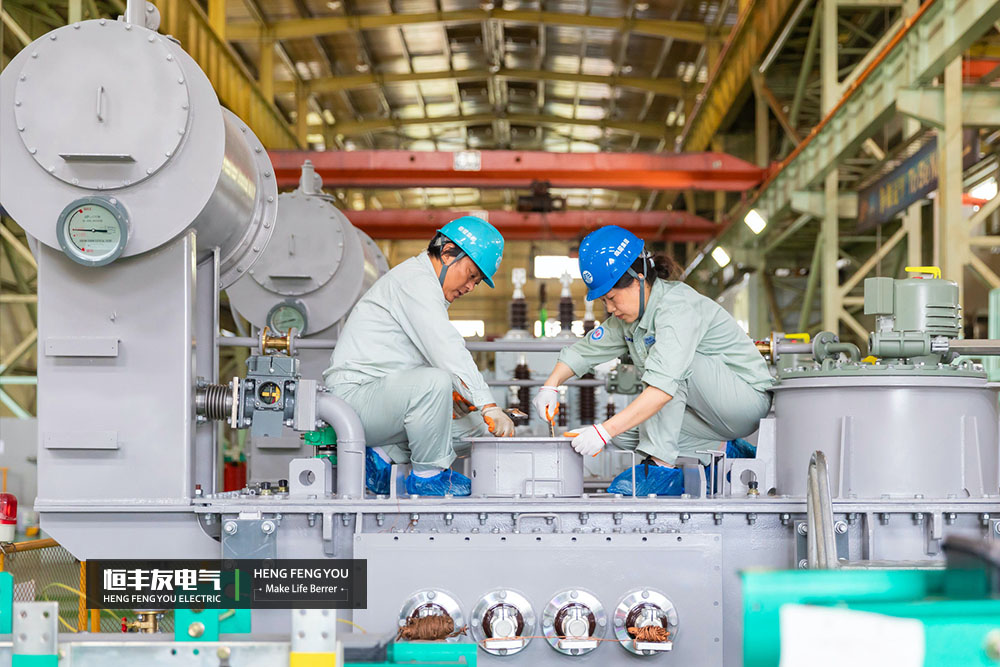What is the temperature rise of oil immersed transformer and what is the temperature rise range of transformer?
Writer: Hengfeng you electric Time:2023-04-18 views:times
1、 Temperature rise of oil immersed transformer
The temperature rise of oil immersed transformer refers to the difference between the transformer temperature and the surrounding air temperature. Among the many factors affecting the service life of transformer, temperature will cause insulation aging, which is the most important factor affecting the service life of transformer. The internal heat transmission of the transformer is uneven, so the temperature of each part of the transformer varies greatly. Provisions are made for the temperature rise of each part of the transformer at rated load, which is the allowable temperature rise of the transformer.
2、 Temperature rise range of power transformer
Class a insulation is adopted for general oil immersed transformer, and the maximum allowable temperature is 105 ℃.
The allowable temperature rise of each part is:
The allowable temperature rise of the coil is 65 ℃. Based on class a insulation 105 ℃, when the ambient temperature is 40 ℃, 105 ℃ - 40 ℃ = 65 ℃. Since the temperature of transformer is generally 10 ℃ lower than that of winding, the allowable temperature rise of transformer oil is 55 ℃.
In order to prevent oil aging, the temperature rise of the upper oil surface shall not exceed 45 ℃. No matter how the surrounding air changes, the safe operation of the transformer within the specified service life can be guaranteed only if the temperature rise does not exceed the allowable value.
The main insulation of general transformer is class a insulation, and the specified maximum service temperature is 105 degrees. The winding temperature of transformer in operation is 10-15 degrees higher than the upper oil temperature.
If the upper oil temperature of the transformer in operation is always about 80-90 degrees, that is, the winding is often about 95-105 degrees.
If the transformer operates at high temperature for a long time, it will shorten the service life of the internal insulating paperboard, make the insulating paperboard brittle, easy to crack, lose its due insulation function, and cause breakdown and other accidents.
When the insulation of transformer winding is seriously aged, it will accelerate the deterioration of insulating oil and affect the service life of transformer. Therefore, it is necessary to avoid the transformer running at high temperature, especially not for a long time. The insulation grade refers to the heat-resistant grade of the insulating materials used. According to the insulation grade classification of dry-type transformer, it can be divided into seven grades: (a, e, B, F, h, N and C),
The temperature rise range of oil immersed transformer is

Marking diagram of temperature rise limit
The temperature rise limit reflects the heat resistance of insulating materials, such as a-105 ℃, which means that the temperature of the transformer itself during operation and the ambient temperature of the day shall not exceed 105 ℃; Other grades are similar.
It is a type test. The traditional temperature rise test evaluates the average temperature rise of winding (measured by resistance method) and the temperature rise of oil top layer. If the measured values of these two temperature rises do not exceed the allowable temperature rise limit specified in the standard, the transformer is considered to have passed the type test of temperature rise test. However, with the improvement of transformer voltage level, the reduction of large capacity transformer loss, the emergence of optical fiber dimensional temperature measuring device, the development of gas chromatographic analysis technology and liquid chromatographic analysis technology in oil, the content of one of the type test items of temperature rise test will be increased
In the transformer with strong oil circulation cooling, due to the relative movement of oil and insulating paperboard, the positive and negative ions in the oil will be separated and the oil flow will be charged. If the oil circuit is not well designed, the oil speed, surface roughness of oil circuit insulating materials and oil material are not properly controlled, such as charged overpotential, surface tension, water content and oil flow electrification, it will develop into oil flow discharge and form faults. Because the oil flow electrification performance of the transformer is generally tested in combination with the temperature rise test, the oil flow electrification characteristics are measured when the pump is only turned on and when the pump is turned on and under voltage. Use the chromatographic analysis results of gas in the oil before and after the test with only the pump on without any voltage (the pump of the standby cooler is generally not on). Conduct the specified partial discharge test with the pump on. The second test is an equivalent test conducted under simulated operating conditions. There is no such requirement in the standard, but in fact, it is very beneficial to conduct the second test.
For large capacity transformers, the chromatographic analysis of gas in oil before and after temperature rise test can also be used to find some defects in design and manufacturing, such as:
a. Transposition error
b. Local overheating
The international grid conference has special judgment criteria to find these defects. Therefore, during this test, the temperature rise test time should be prolonged, generally more than 48 hours.
For large capacity transformers, magnetic shielding, plate type, strip type, vertical installation up and down, and left and right spans are installed on the oil tank wall at present. Magnetic flux leakage will produce noise in the magnetic shield, that is, load noise. It cannot be tested in the no-load noise test, but can only be measured in the temperature rise test under full load, and the noise of the cooling device can also be measured at the same time. When the capacity is large, especially the impedance voltage is large, the load noise can not be ignored. Therefore, the load noise of transformer can be measured by temperature rise test.
At present, there is a temperature measurement system for measuring the temperature of the hottest spot of the winding. A sensor is placed near the conductor to send out a signal through the optical waveguide. A certain number of sensors can be embedded to measure the temperature of the hottest spot of the winding and the transient temperature characteristics in the temperature rise test. This is also beneficial to large capacity transformers.
For the transformer with strong oil circulation cooling, the temperature rise test can also be used to measure the pressure drop of the oil circuit, so as to detect whether the pump head is sufficient and whether there will be negative pressure.
In the temperature rise test, it is also necessary to detect whether there is local overheating on the oil tank wall, which can be carried out by infrared thermometer. Infrared scanning can be used near the high current bushing and the high current lead to detect whether there is overheating.
For extra large capacity transformer or high impedance transformer, a certain percentage of rated current shall be connected at the stage of body process, and the temperature distribution shall be detected by infrared thermometer. To monitor the temperature distribution of internal structural members.
Heat sometimes leads to the decomposition of oil and the aging of paper, which is not only a problem of transformer life, but also related to the safe operation of transformer. Therefore, the increase of temperature rise test content is beneficial and harmless to the reliability of transformer.
In addition, the national standard dry-type transformer gb6450-1986 clearly stipulates the temperature rise limit of dry-type transformer.


